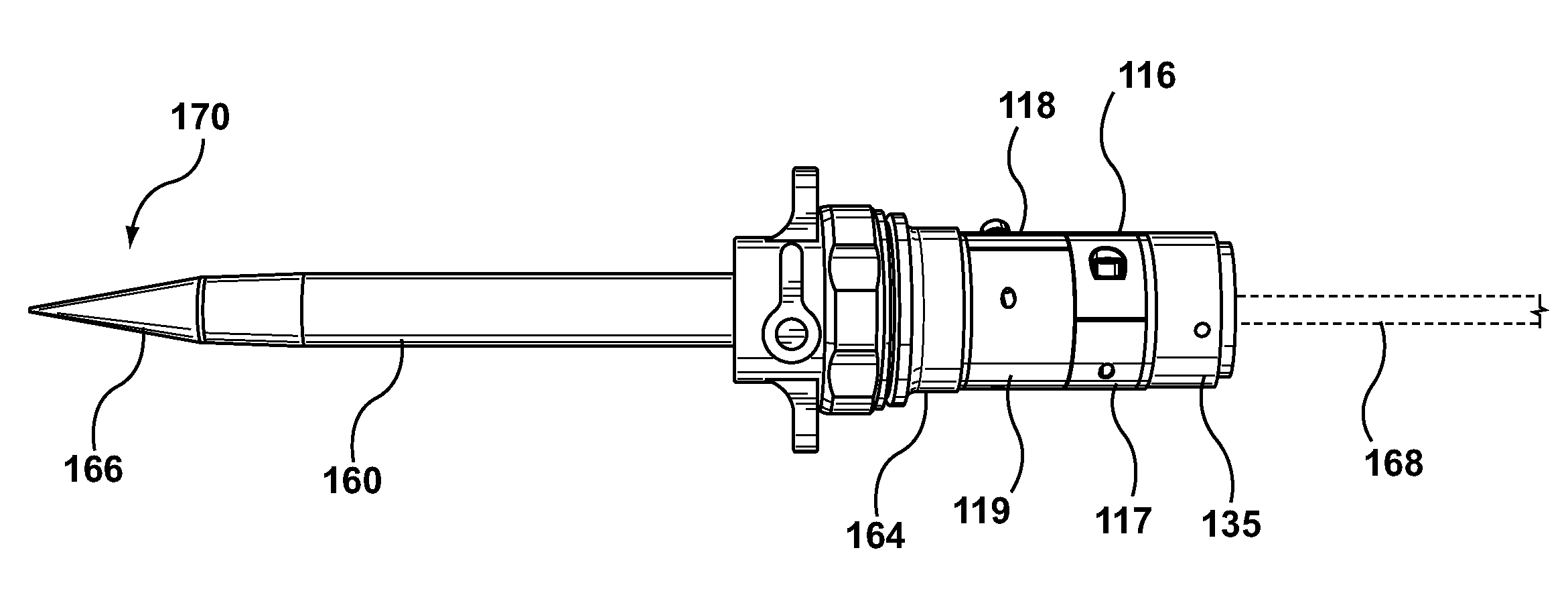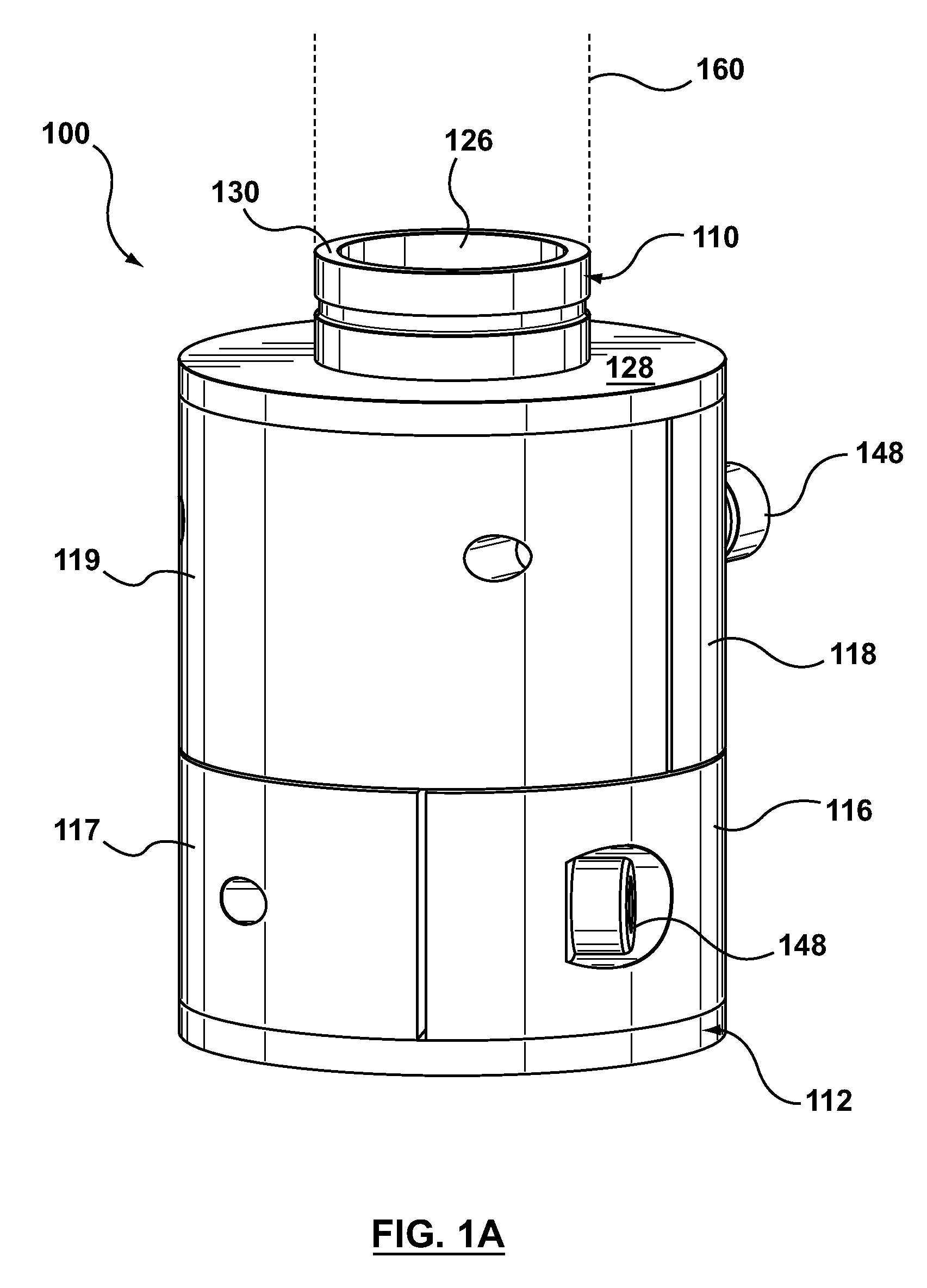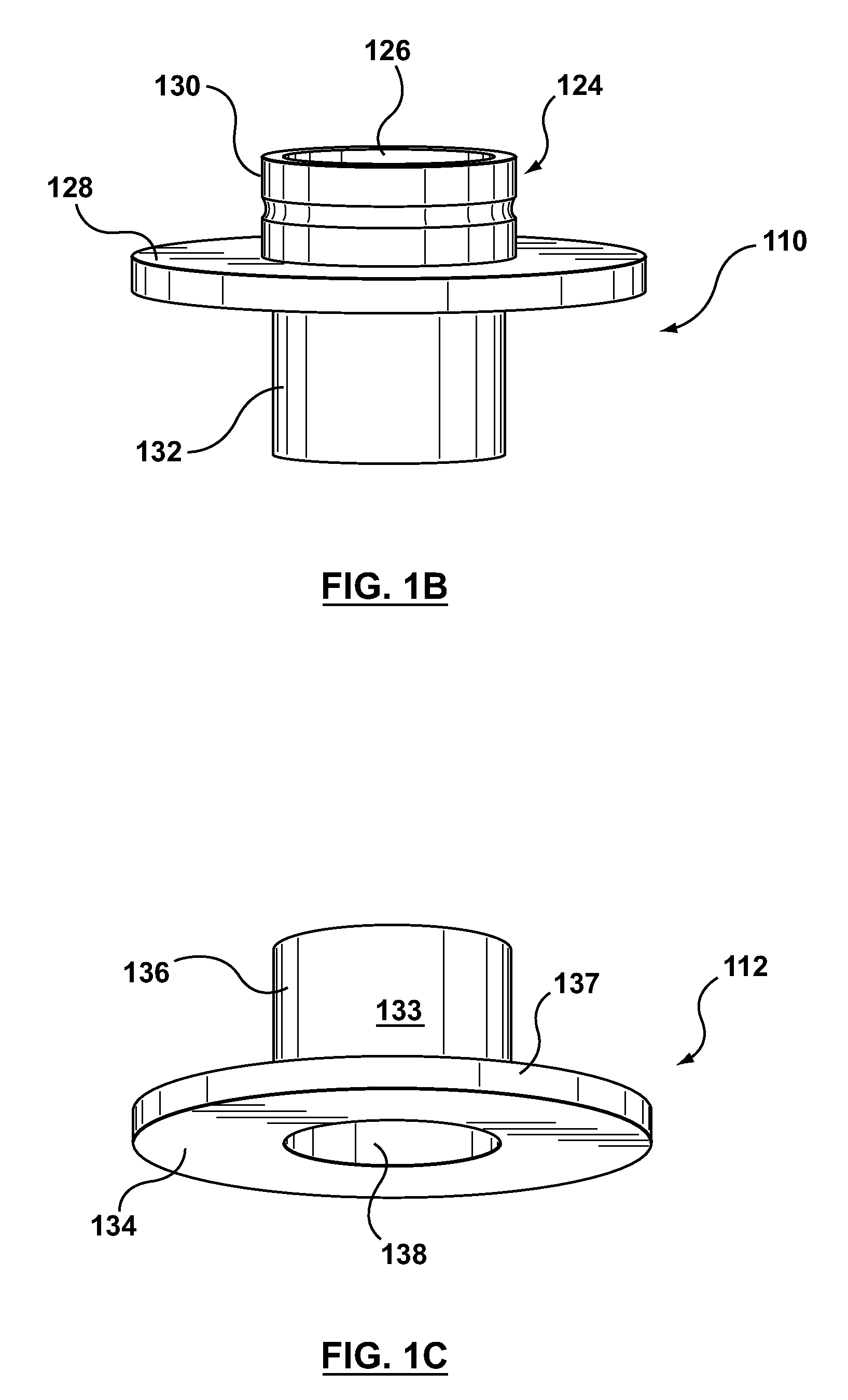Variable hemostasis valve and method of use
a hemostasis valve and variable technology, applied in the field of variable hemostasis valves, can solve the problems of not allowing variable control over the strength of the seal within the hemostasis valve, many hemostasis valves do not fully adapt to large or irregularly sized instruments, and many flaps fail to form a fluid-tight seal around the full structure of the inserted instrument. to achieve the effect of preventing blood loss
- Summary
- Abstract
- Description
- Claims
- Application Information
AI Technical Summary
Benefits of technology
Problems solved by technology
Method used
Image
Examples
Embodiment Construction
[0021]Specific embodiments of the present invention are now described with reference to the figures. The terms “distal” and “proximal” are used in the following description with respect to a position or direction relative to the treating clinician. “Distal” or “distally” are a position distant from or in a direction away from the clinician. “Proximal” and “proximally” are a position near or in a direction toward the clinician.
[0022]The presently disclosed variable hemostasis valve apparatus and method of use provide significant advantages over existing hemostasis valves. In addition to providing a fluid-tight seal, the seal is easily tightened and released by an operator through rotation of a proximal portion of the variable hemostasis valve housing. The presently disclosed variable hemostasis valve also provides a flexible, form-adapting seal which can be variably tightened and released upon command. Therefore, the valve may be used in conjunction with a number of insertion assembl...
PUM
 Login to View More
Login to View More Abstract
Description
Claims
Application Information
 Login to View More
Login to View More - R&D
- Intellectual Property
- Life Sciences
- Materials
- Tech Scout
- Unparalleled Data Quality
- Higher Quality Content
- 60% Fewer Hallucinations
Browse by: Latest US Patents, China's latest patents, Technical Efficacy Thesaurus, Application Domain, Technology Topic, Popular Technical Reports.
© 2025 PatSnap. All rights reserved.Legal|Privacy policy|Modern Slavery Act Transparency Statement|Sitemap|About US| Contact US: help@patsnap.com



